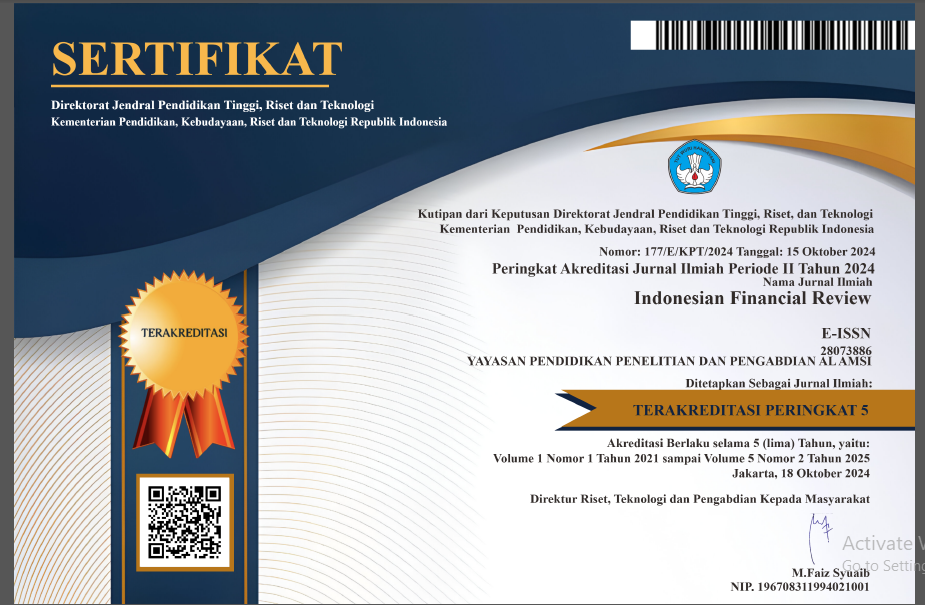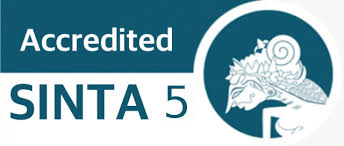Liquidity and Leverage Effects on Profitability: Evidence from PT Link Net Tbk (2015–2024)
DOI:
https://doi.org/10.55538/ifr.v5i1.93Abstract
This study explores the influence of Current Ratio (CR) and Debt to Asset Ratio (DAR) on Return on Assets (ROA) at PT Link Net Tbk from 2015 to 2024 using a quantitative approach. The research analyzes the company’s financial statements as both population and sample. Findings indicate that CR does not significantly affect ROA, whereas DAR has a negative and significant impact. When examined together, CR and DAR significantly influence ROA. The results suggest that liquidity alone does not determine profitability, while leverage plays a critical role in asset returns. These insights emphasize the importance of prudent debt management and financial planning for improving company performance, offering guidance for management in optimizing financial structure to enhance overall profitability.
References
Astutik, E. P., & Anggraeny, A. N. (2019). Effect of Current Ratio (CR) and Debt to Asset Ratio (DAR) on Return on Assets (ROA). Journal of Security, 3(1), 97–111.
Bosse, D. A., & Phillips, R. A. (2016). Agency theory and bounded self-interest. Academy of Management Review, 41(2), 276–297. https://doi.org/10.5465/amr.2013.0420
Ghozali, I. (2020). Aplikasi Analisis Multivariate dengan Program IBM SPSS 25 (10th ed.). Semarang: Badan Penerbit Universitas Diponegoro.
Gill, A., Biger, N., & Mathur, N. (2011). The effect of capital structure on profitability: Evidence from the United States. International Journal of Management, 28(4), 3–15.
Gunawan, T., & Ramli, A. H. (2023). The influence of firm size, leverage, liquidity, and cash turnover on profitability: Empirical study of the food and beverage sub-sector companies in 2018–2022. Jurnal Ilmiah Akuntansi Kesatuan, 11(3), 637–652. https://doi.org/10.37641/jiakes.v11i3.2383
Hidayat, A. R. (2024). The influence of current ratio and debt to asset ratio on return on assets at PT Adhi Karya Tbk for the 2010–2022 period. Indonesian Financial Review, 4(2), 45–52.
Jensen, M. C., & Meckling, W. H. (1976). Theory of the firm: Managerial behavior, agency costs and ownership structure. Journal of Financial Economics, 3(4), 305–360. https://doi.org/10.1016/0304-405X(76)90026-X
Margaritis, D., & Psillaki, M. (2010). Capital structure, equity ownership, and firm performance. Journal of Banking & Finance, 34(3), 621–632. https://doi.org/10.1016/j.jbankfin.2009.08.023
Malinda, E., & Nugroho, R. D. (2024). Pengaruh current ratio dan debt to asset ratio terhadap return on asset. SOCIORA: The Journal of Social Sciences
Rahman, A., Shafiq, M., & Kim, J. (2023). Capital structure, profitability, and firm value: Evidence from Asian telecommunication firms. Finance Research Letters, 57, 104–129. https://doi.org/10.1016/j.frl.2023.104129
Salim, M., & Yadav, R. (2012). Capital structure and firm performance: Evidence from Malaysian listed companies. Procedia – Social and Behavioral Sciences, 65, 156–166. https://doi.org/10.1016/j.sbspro.2012.11.105
Sari, D. M., & Lee, H. (2022). Liquidity, leverage, and firm performance: Evidence from Asian telecommunication companies. Asian Economic and Financial Review, 12(6), 489–503. https://doi.org/10.55493/5002.v12i6.4522
Spence, M. (1973). Job market signaling. The Quarterly Journal of Economics, 87(3), 355–374. https://doi.org/10.2307/1882010
Wiseman, R. M., & Gomez-Mejia, L. R. (1998). A behavioral agency model of managerial risk taking. Academy of Management Review, 23(1), 133–153. https://doi.org/10.5465/amr.1998.192967
Downloads
Additional Files
Published
How to Cite
Issue
Section
License
Copyright (c) 2025 Rehelia Yemima Piay, Ardi Bachtiar

This work is licensed under a Creative Commons Attribution 4.0 International License.















